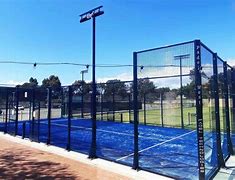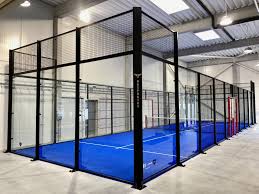Designing and maintaining a squash court requires an intricate balance of materials, expertise, and commitment to quality, serving both amateurs and professionals in this fast-paced sport. Squash courts are integral to the game's dynamics, and their characteristics can significantly influence performance. They are designed with precision, ensuring each component, from flooring to walls, meets stringent standards for safety, durability, and playability.

The surface of a squash court is a crucial element in player performance and injury prevention. Most modern courts use a special wood flooring, typically made from durable hardwood such as maple or beech, which offers optimal resilience and traction. The surface must be smooth and perfectly leveled, with a specific amount of cushioning to absorb impact, reducing the stress on players' joints. An uneven or improperly cushioned floor can lead to serious injuries, making the choice of materials an expertise-driven decision.
The walls of a squash court are equally important, constructed from materials designed to withstand repeated impact. High-quality courts often employ a combination of plaster and glass walls. Plaster walls provide a consistent playing surface for rebounds, while glass walls allow spectators to view matches without obstruction. Glass is treated to ensure it is not only transparent but also strong enough to resist shattering upon impact. This makes choosing experienced contractors crucial, as the walls must be installed with precision to ensure the ball's trajectory remains consistent during play.

Lighting is another essential aspect impacting the court's effectiveness and user experience. Adequate lighting ensures visibility and can affect player reaction times and performance. The recommended illuminance for squash courts is at least 500 lux, uniformly distributed to minimize shadows and glare. This specification highlights the necessity for expert-designed lighting systems tailored to the court's dimensions and environment.
squash sport court
Maintenance of the court is critical to sustaining its quality and longevity. Routine inspections and cleaning are necessary to prevent hazards such as dust accumulation, which can alter the ball's bounce and player movement. Floors require periodic resealing to maintain their slip-resistant qualities, and walls should be regularly checked for cracks or damage.
Providing an exemplary squash court experience extends beyond just physical installations. The authority of a squash facility is also measured by the availability of certified coaches and referees, who contribute toward an enriching and safe environment for players. Their professional input not only enhances the playing experience but also instills confidence among users, knowing they are receiving guidance from recognized experts.
Trustworthiness in squash court provision is underscored by compliance with international standards. Adhering to guidelines set by governing bodies like the World Squash Federation ensures the court meets all necessary safety and performance benchmarks. Facilities that demonstrate commitment to these standards earn the trust of their clientele, reassuring players and sponsors alike that their investment is a sound one.
In essence, the design and maintenance of a superior squash court demand a comprehensive and expert approach. Only through meticulous attention to materials, construction standards, and maintenance routines can a squash court offer an exceptional sporting experience that combines safety, performance, and reliability.



